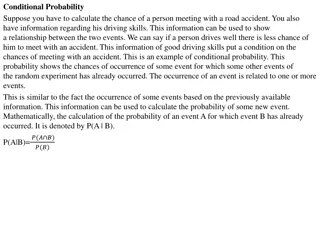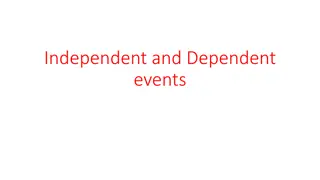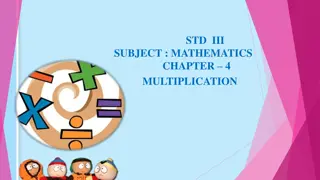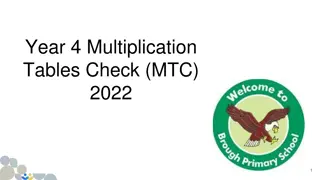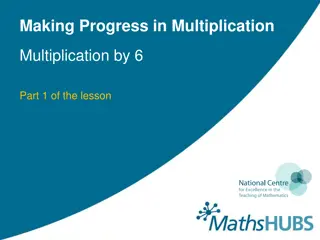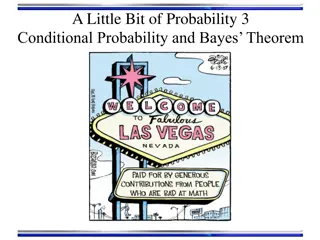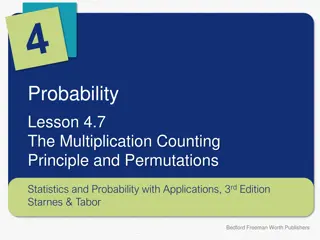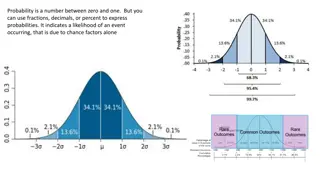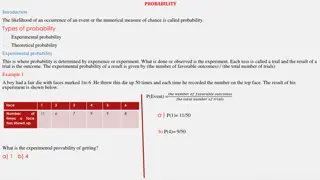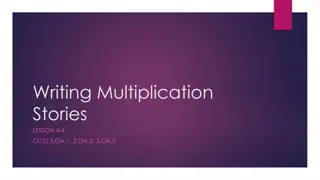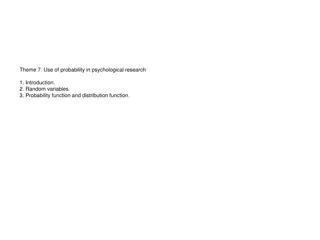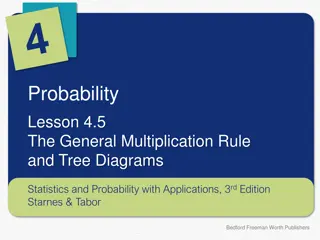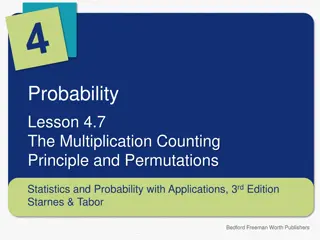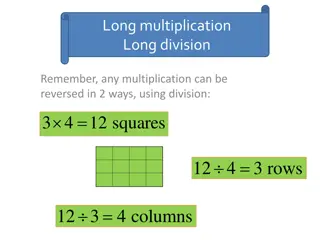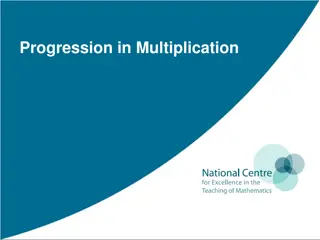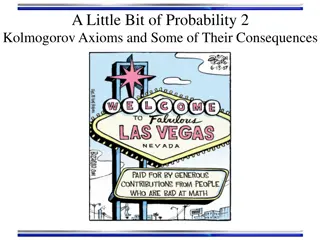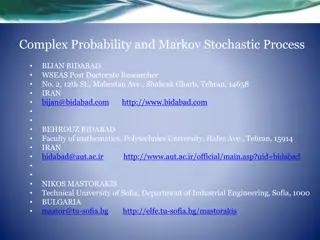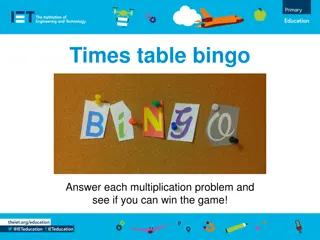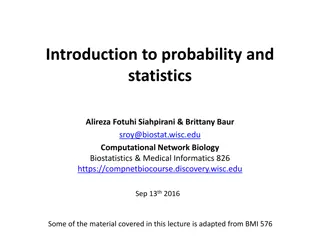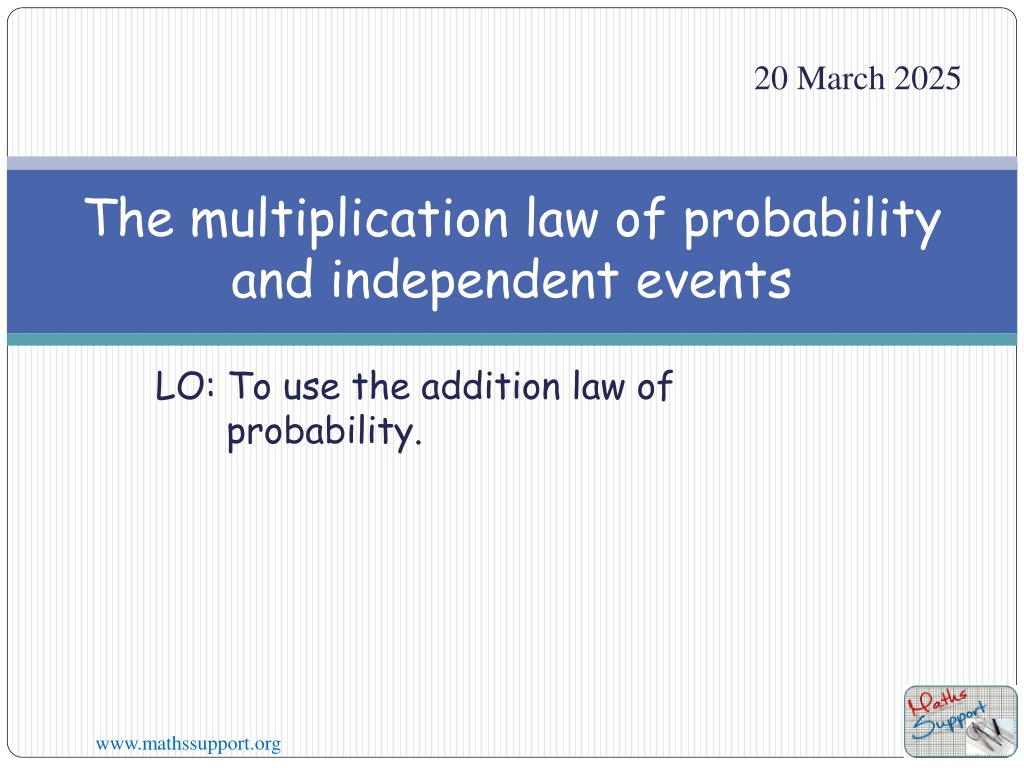
Understanding the Multiplication Law of Probability
Explore the concept of the multiplication law of probability and independent events through various scenarios like coin tosses, dice rolls, and archery practice. Learn how to calculate the probability of compound events and understand the concept of independence between events.
Download Presentation

Please find below an Image/Link to download the presentation.
The content on the website is provided AS IS for your information and personal use only. It may not be sold, licensed, or shared on other websites without obtaining consent from the author. Download presentation by click this link. If you encounter any issues during the download, it is possible that the publisher has removed the file from their server.
E N D
Presentation Transcript
20 March 2025 The multiplication law of probability and independent events LO: To use the addition law of probability. www.mathssupport.org
The multiplication law of probability Now we look more closely at compound events involving two events. Two events are independent if the occurrence of each event does not affect the occurrence of the other. For example: Tossing a coin and rolling a die simultaneously. 1 2 1 6 P(A) = P(a head) = Event A: Getting a head . P(B) = P(a 3) = Event B: Rolling a 3 . The two events are independent since the outcome of the coin toss has no effect on the outcome from the dice roll. P(a head) 1 2 If two events A and B are independent then = P(A B) Remember A B means A and B = = P(a 3) 1 6 P(a head and a 3) =1 P(A B) 12 P(A) P(B) www.mathssupport.org www.mathssupport.org
The multiplication law of probability A coin is tossed and a square spinner labelled A, B, C, and D is spun simultaneously. Determine the probability of getting a tail and a C.. The two events are independent since the outcome of the coin toss does not affect the outcome from the spinner and vice versa. 1 2 1 4 P(A) = P(a head) = Event A: Getting a head . P(B) = P(a 3) = Event B: Getting a C . = = P(a C) 1 4 P(a head and a C) P(a head) 1 2 =1 P(A B) 8 www.mathssupport.org www.mathssupport.org
The multiplication law of probability Diego and Pamela practice archery, Diego has probability 7 hitting a target and Pamela has probability 4 simultaneously at the target, determine the probability that (a) They both hit. (b) They both miss. 9 of 7 if they both fire 7 9 4 7 2 9 3 7 P(A) P(A ) Event A: Diego hits . = = P(B) P(B) 4 7 = P(B ) Event B: Pamela hits . = P(A) 7 9 P(both hit) = P(A B) = =4 = 9 P(B ) = P(A ) P(both miss) = P(A B ) =2 3 7 2 9 = 21 www.mathssupport.org www.mathssupport.org
The multiplication law of probability A marble is selected at random from each of these bags (a) Draw a tree diagram to display the possible outcomes. (b) Find the probability of obtaining a blue marble and a red marble. Bag B Bag A Let B represent a Blue marble R represent a Red marble G represent a Green marble Bag A The events B and R are independent then P(B R) P(blue and a red marble) P(B) P(R) = Bag B B R G B R G 4 72 =6 2 7 3 5 If two or more branches satisfy the event, the probabilities are added B 35 7 1 7 3 5 =8 4 7 2 5 35 4 72 2 5 R 35=14 6 35+8 7 1 7 35 www.mathssupport.org www.mathssupport.org
Thank you for using resources from A close up of a cage Description automatically generated For more resources visit our website https://www.mathssupport.org If you have a special request, drop us an email info@mathssupport.org Get 20% off in your next purchase from our website, just use this code when checkout: MSUPPORT_20 www.mathssupport.org

